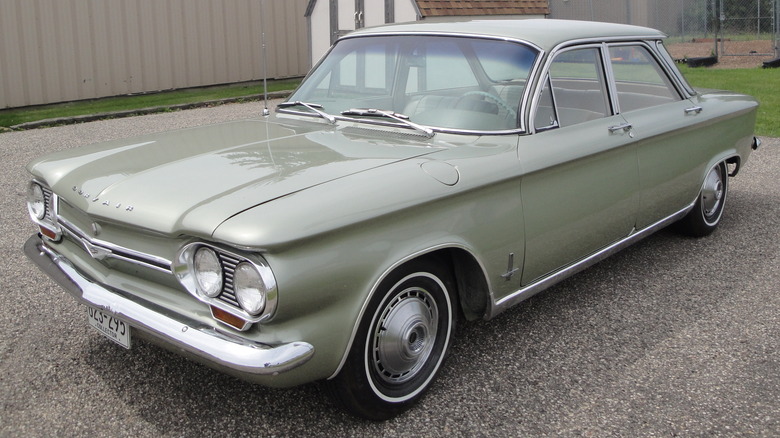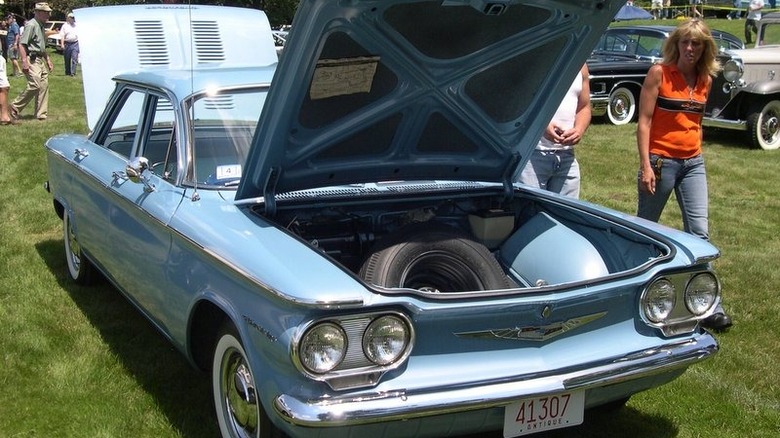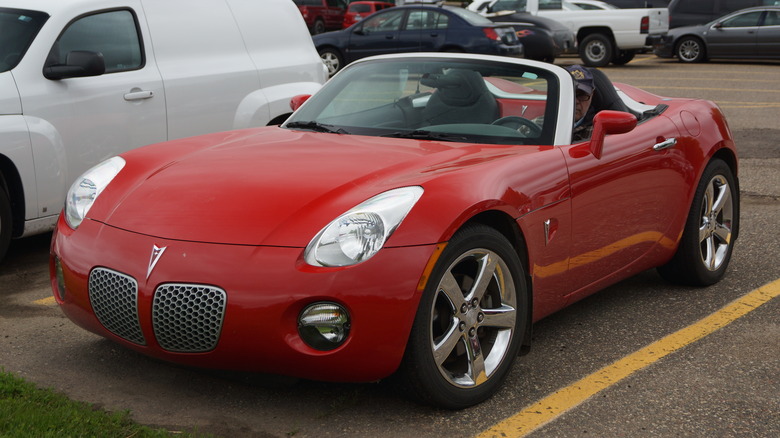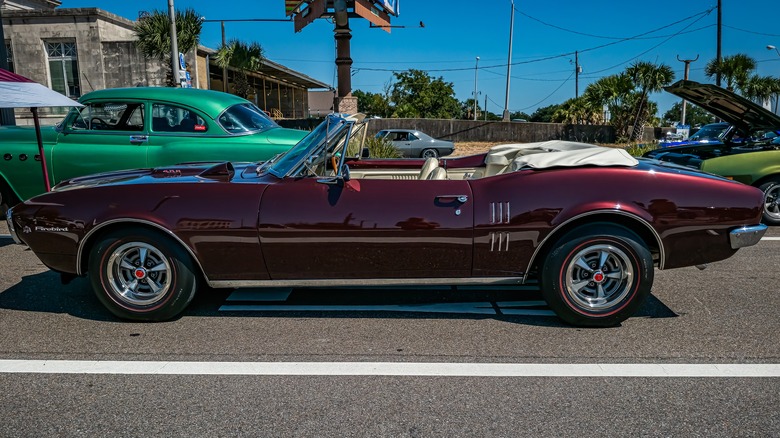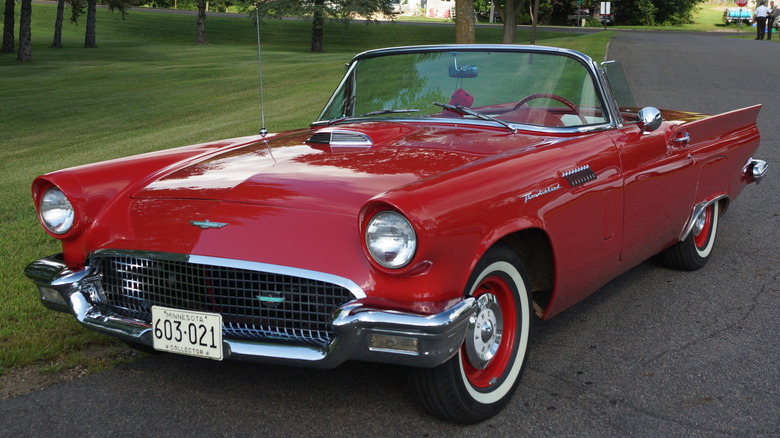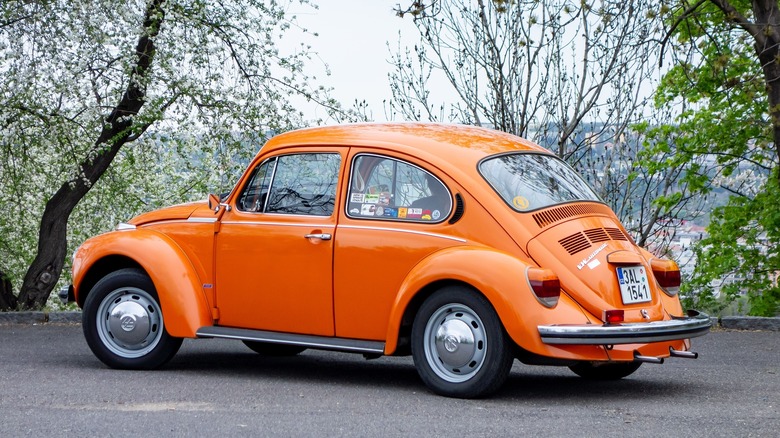5 Discontinued Cars We'd Like To See Brought Back As EVs
Electric vehicles take a bigger share of the market from gas cars each year, and by 2035 you won't be able to buy a new fossil fuel burner in much of the world. At least a dozen of the United States plan to follow that same timeline, meaning millions of Americans will need to drive electric vehicles when their current cars are ready for the salvage yard or sold off. Over the past three decades or so, EVs have evolved from strangely-styled slowpokes to become some of the fastest cars on the market today. For example, the Tesla Model S Plaid uses three electric motors to rocket from 0-60 in just 2.1 seconds, and the Rivian R1T can do that same sprint in three seconds flat.
While there are plenty of rocket-ship quick electric vehicles on the market today, their designs tend to be somewhat cookie-cutter, with an emphasis on weight savings and aerodynamics in order to maximize range. That leaves fans of classic car styling in the lurch, many of whom would love to see their favorite discontinued models revived as EVs in anticipation of the upcoming internal combustion phase-out.
[Featured image by Greg Gjerdingen via Wikimedia Commons | Cropped and scaled | CC BY 2.0]
A Corvair EV could help redeem the nameplate
The Chevrolet Corvair had plenty of promise when it was introduced in 1960. The revolutionary new compact had a rear-mounted engine made primarily of aluminum, an independent suspension at all four corners, and a lightweight unibody construction. Magazine publishers loved the Corvair: It made the cover of Time, and MotorTrend named it the 1960 Car of the Year. The new model wasn't universally praised, though. Consumer advocate Ralph Nader's 1965 book "Unsafe at any Speed" called out the Corvair for unpredictable handling that could cause rollover crashes, and Chevy made major changes to the suspension for the second generation in 1965.
The Corvair will forever be associated with Nader's well-known criticism, but the model has retained a loyal fanbase over the years. The original design is perfect for an EV, with the cavernous empty space under the hood potentially providing room for a battery bank. Reviving the Corvair as an EV would give new life to one of the car industry's most misunderstood models ever, and the distinctive '60s styling would be welcome in an era of bubble-shaped clones.
[Featured image by Steven Foskett via Wikimedia Commons | Cropped and scaled | CC BY-SA 2.5]
The Solstice would be a welcome addition to a thin crop of EV roadsters
The Pontiac Solstice roadster enjoyed moderate sales success in its first three model years from 2006 through 2008, and remains one of the favorite cars of that era almost two decades later. While it might be too young to be regarded by some as a "classic," the Solstice has undeniable curb appeal and would make a great template on which to build a modern EV. The 2009 model weighs in at just 2,908 pounds, which is more than half a ton less than most versions of the Tesla Model 3.
An EV convertible would also help fill out an automotive niche that currently holds less than a dozen production models, including the identical Fiat and Abarth 500e. The biggest obstacle to the Solstice's revival is the fact that the Pontiac brand was dumped by GM more than a dozen years ago, but the Solstice could be brought back as a Chevy, Buick, or even a Cadillac. Another big problem would be one for GM's engineers: The original Solstice design leaves little room to mount the batteries, but GM's new BEV3 platform could be a suitable base from which to build a similar Solstice EV.
[Featured image by Greg Gjerdingen via Wikimedia Commons | Cropped and scaled | CC BY 2.0]
The world is ready for a Pontiac FIrebird EV
Most EVs fit into the family or sports car categories, but the Dodge Charger Daytona EV is coming to clear the road for more EV muscle cars based on beloved classics. The Pontiac Firebird had a long run beginning in 1967, and was spun off into a high-performance version with the Trans Am in 1969. The Trans Am in particular was a big hit with Hollywood producers, starring in "Smokey and the Bandit" and on the original "Knight Rider" series.
The Firebird and Trans Am were discontinued in 2002, but the Charger Daytona EV's introduction could be a beacon for other automakers to resurrect their own long-gone muscle cars with electric drivetrains. The Firebird could be particularly popular as nostalgia for the 1980s is surging. Sensei Johnny Lawrence (William Zabka) drove a red 1991 Firebird in the first season of "Cobra Kai," and "Knight Rider" got a single-season reboot in 2008 and 2009 (albeit sporting a different retro-futuristic build on a Ford Mustang).
It will take more than nostalgia to bring the Firebird back, though. A Firebird EV will also need to be assigned to a new division of General Motors, although the open space for electric muscle cars leaves room for the Pontiac brand to potentially be revived to help fill it. That's still a tall order, especially for the brand that's now been defunct for 15 years.
The first-generation Thunderbird would make a fine EV
Ford introduced the Thunderbird in 1955 as a two-seater, and it gained two more seats in back for the 1958 model year. Louis Crusoe and George Walker designed the Thunderbird after a Ferrari Barchetta they saw in France, and the Thunderbird outsold the Corvette by 4.5 to one in its first three years. The Thunderbird lived through 11 generations before being discontinued in 2005, and the 1955-57 two-seaters often sell for six figures in good condition. That demand makes the Thunderbird a clear candidate for resurrection as an EV, and Ford has several different designs to base a hypothetical new model off of.
The first generation would make the best EV, primarily because it's the smallest and lightest Thunderbird. It's also the most strikingly beautiful, and it's unlike anything on the car market today. Ford's EV offerings also currently include just three models: the Mustang Mach-E, the F-150 Lightning pickup, and the E-Transit van. Reviving the Thunderbird as an EV gets Ford back into the personal luxury car segment, and buyers would stampede to dealerships if it was given styling reminiscent of the first edition.
[Featured image by Greg Gjerdingen via Wikimedia Commons | Cropped and scaled | CC BY 2.0]
VW should resurrect the Beetle as an EV
The Beetle was Volkswagen's first model, born from the rubble of what is now Wolfsburg, and was first sold in the U.S. in 1949. The original design persisted through the late '70s, and VW made the new Beetle for about 20 years in the late '90s and into the 21st Century. While the Beetle has since been discontinued, it still remains an iconic model that many people think of when talking about Volkswagen.
Volkswagen has plenty of experience building EVs, and will soon release the ID.Buzz, an electric van styled after the iconic Microbus. That model's impending release indicates that VW is certainly willing to meld its past with the future. The Beetle remains one of the best-selling badges in the automaker's history, with more than 20 million sold, so it'd make sense for VW to bring back the Beetle in some capacity.
Nostalgic buyers would no doubt flock to dealerships to buy an EV Beetle, and Volkswagen has several EVs in production on which it could base a new Beetle electric platform on.
